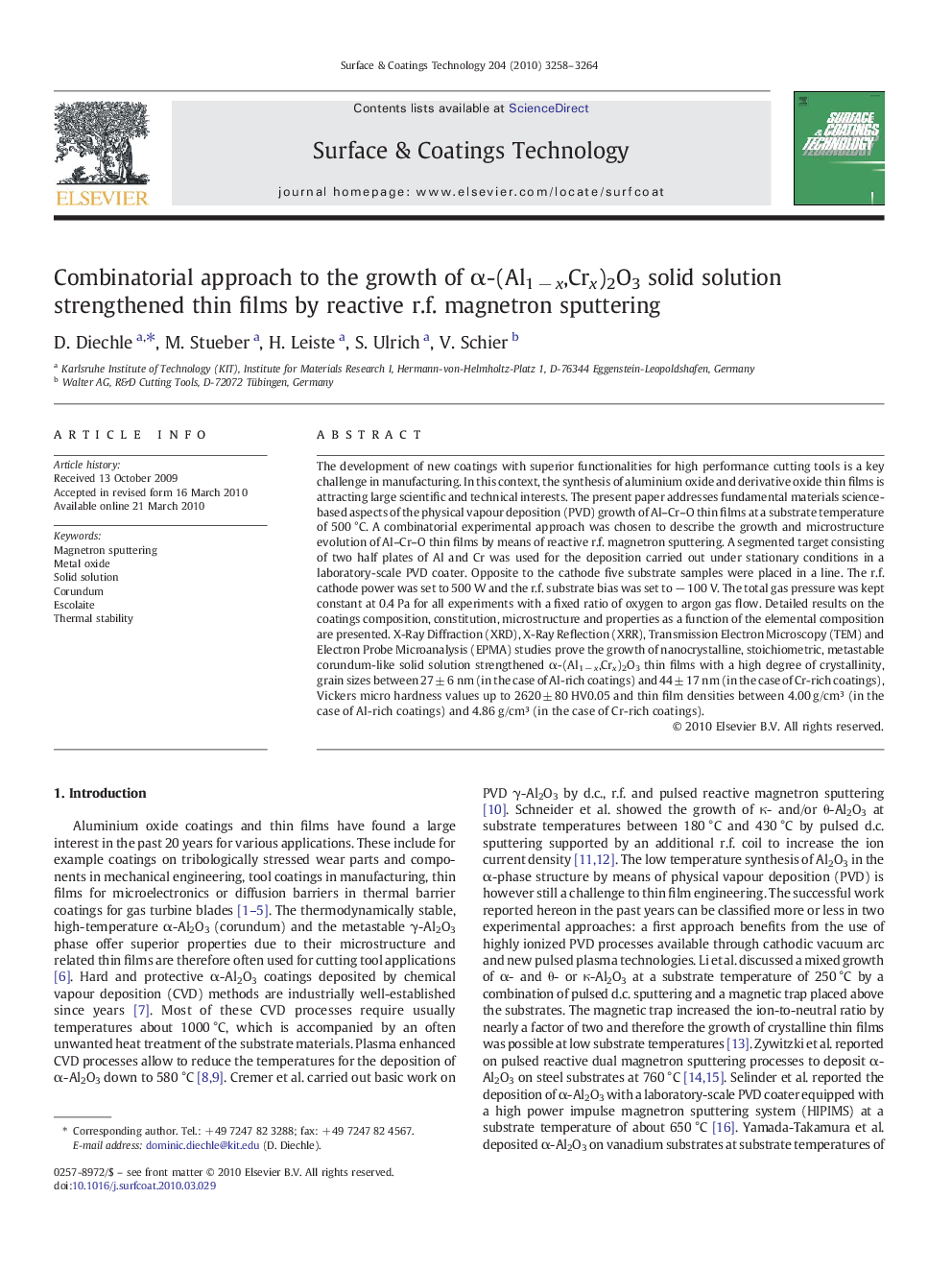| Article ID | Journal | Published Year | Pages | File Type |
|---|---|---|---|---|
| 1659233 | Surface and Coatings Technology | 2010 | 7 Pages |
The development of new coatings with superior functionalities for high performance cutting tools is a key challenge in manufacturing. In this context, the synthesis of aluminium oxide and derivative oxide thin films is attracting large scientific and technical interests. The present paper addresses fundamental materials science-based aspects of the physical vapour deposition (PVD) growth of Al–Cr–O thin films at a substrate temperature of 500 °C. A combinatorial experimental approach was chosen to describe the growth and microstructure evolution of Al–Cr–O thin films by means of reactive r.f. magnetron sputtering. A segmented target consisting of two half plates of Al and Cr was used for the deposition carried out under stationary conditions in a laboratory-scale PVD coater. Opposite to the cathode five substrate samples were placed in a line. The r.f. cathode power was set to 500 W and the r.f. substrate bias was set to − 100 V. The total gas pressure was kept constant at 0.4 Pa for all experiments with a fixed ratio of oxygen to argon gas flow. Detailed results on the coatings composition, constitution, microstructure and properties as a function of the elemental composition are presented. X-Ray Diffraction (XRD), X-Ray Reflection (XRR), Transmission Electron Microscopy (TEM) and Electron Probe Microanalysis (EPMA) studies prove the growth of nanocrystalline, stoichiometric, metastable corundum-like solid solution strengthened α-(Al1 − x,Crx)2O3 thin films with a high degree of crystallinity, grain sizes between 27 ± 6 nm (in the case of Al-rich coatings) and 44 ± 17 nm (in the case of Cr-rich coatings), Vickers micro hardness values up to 2620 ± 80 HV0.05 and thin film densities between 4.00 g/cm³ (in the case of Al-rich coatings) and 4.86 g/cm³ (in the case of Cr-rich coatings).
